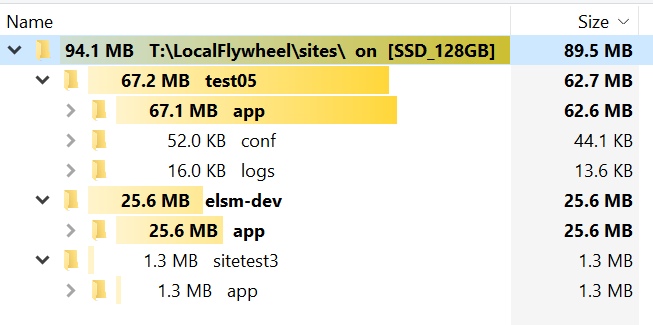Issue Summary
Everything was working fine yesterday, but after updating today I get “502 Request Error” on every site. Also, in the local main interface, WordPress version continuously displays the “busy” dots

Troubleshooting Questions
- Does this happen for all sites in Local, or just one in particular?
All sites
- Are you able to create a new, plain WordPress site in Local and access it in a Browser?
Yes, I can create and login. Not sure if it works with SSL / HTTPS though
Replication
Create two websites yesterday with the previous version of Local before today’s update, having implemented the workaround
TO REPRODUCE:
0. Rollback to the previous version of Local
1: Install Local as admin
2: CHANGE LOCAL SITES FOLDER:
- Preferences > New site defaults> point to folder on external drive
3: Create new site: SITETEST_01
- Windows 10 64-bit
- PHP: 8.1.9
- Web Server: Apache 2.4.43
- Database: MySQL 8.0.16
4: REINSTALL WORDPRESS ACCORDING TO @montreal’s workaround here: CANT LOGIN INto WP dashboard - #2 by sheedyaja
-
#GOTCHA #SOLVED #WORKAROUND: This is a workaround to get around the “can’t login to wp-admin” known issue and is required for HTTPS to work.
-
Right click on the “SITETEST_01” in the Local interface and choose “Go to site folder”
-
In explorer, open “sitetest_01\app\public”
-
Delete wp-config.php
-
Refresh the site in the browser. You will be presented with a WordPress install screen
-
Select your language then enter the following database info:
Database Name: local
Username: root
Password: root
- Leave the remaining fields alone and click “Submit”, then “Run the installation”
- You will see a notice: “Already Installed: You appear to have already installed WordPress. To reinstall please clear your old database tables first.”
- Now click “Log In”. NOW you should be able to login with your username and password!

5: ACTIVATE SSL CERTIFICATE
- In the SITETEST_01 interface “SSL” field click on “Trust”
- NOW change “http” in the browser address bar to “https” and hit enter
- You will be presented with the login page again, but this time with an HTTPS URL
- Enter your credentials and login
- NOW you should be logged back into the WordPress dashboard AND you should notice the PADLOCK icon to the left of the URL in the address bar!

6: INSTALL PLUGIN: REALLY SIMPLE SSL lite
-
You should see the “Almost ready to migrate to SSL!” popup
-
As the instructions say “If you’re certain an SSL certificate is present, and refresh SSL status does not work, please check “Override SSL detection” to continue activating SSL.”, do that.
-
Click “Override SSL detection”
-
Click “Activate SSL” - you may be required to log back in
-
You should now see a window indicating with a green checkmark “SSL has been activated”
-
Youre RSSSL dashboard panel, in the “Progress” section should say something like:
8% SSL is activated on your site. You still have 7 tasks open.
7: INSTAL PLUGIN: WP FORMS LITE
8: CREATE YOUR FIRST FORM
- Dashboard > Pages > Create a new page called “Contact”. Whoa! - WP forms noticed and provides a helpful message:
"hey, it looks like you’re working on a Contact page.
Did you know that with WPForms, you can create an easy-to-use contact form in a matter of minutes?"
9: INSTALL PLUGIN: WP MAIL SMTP
- I signed up with an SMTP mailer service called Sendinblue that allows 300 emails a day without any credit card
- Configure WP Mail SMTP to work with Sendinblue or whatever SMTP service you signed up for. You will need your API key
System Details
- Which version of Local is being used?
7.0.2+6395
- What Operating System (OS) and OS version is being used?
- For example: macOS Catalina or Windows 10 Professional
Windows 10 64-bit
- Attach the Local Log. See this Help Doc for instructions on how to do so:
local-logs.zip attached
Security Reminder
Local does a pretty good job of scrubbing private info from the logs and the errors it produces, however there’s always the possibility that something private can come through. Because these are public forums, always review the screenshots you are sharing to make sure there isn’t private info like passwords being displayed.
local-logs.zip (3.6 KB)

